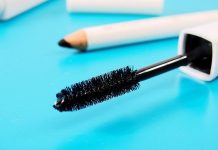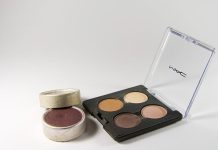In the ever-evolving world of hair care, myths and facts often intertwine, leaving many to wonder about the true secrets to luscious locks. One enduring question that persists is whether frequent trimming is essential for healthy hair growth. Is it a time-honored truth or simply a well-meaning myth? In this exploration, we delve into the science and stories behind hair maintenance, seeking clarity amidst the snip of the scissors. Join us as we unravel the mysteries of hair health and discover what truly lies at the root of radiant tresses.
Understanding the Science Behind Hair Growth
At the core of hair growth lies a complex biological process involving the hair follicle, a dynamic organ found in the skin. Hair grows in cycles, each consisting of three phases: anagen (growth), catagen (transition), and telogen (rest). The anagen phase is where the magic happens, lasting anywhere from two to seven years, and is responsible for the length of your hair. This phase is heavily influenced by genetics, hormones, and overall health.
- Anagen: Active growth phase, determining hair length.
- Catagen: Transitional phase, where growth slows down.
- Telogen: Resting phase, leading to shedding.
Understanding this cycle helps clarify the common myth about frequent trimming. While trimming doesn’t directly impact the growth from the follicle, it can prevent split ends and breakage, which contributes to healthier-looking hair. The key is maintaining a balance between growth and trimming to achieve the desired health and length.

Debunking Myths: How Often Should You Trim?
Many people believe that frequent trims are the secret to luscious locks, but the truth is more nuanced. Hair grows from the roots, not the ends, so cutting your hair doesn’t directly influence its growth rate. However, regular trims can be beneficial for maintaining healthy-looking hair. Trimming helps remove split ends, which can prevent further damage and breakage. This gives the appearance of thicker, healthier hair, even if it doesn’t actually speed up growth.
Consider the following when deciding how often to trim:
- Hair Type: Curly and textured hair might require less frequent trims compared to straight hair.
- Hair Goals: If you’re aiming for longer hair, trims every 8-12 weeks can help maintain health without sacrificing length.
- Damage Control: For hair prone to damage or split ends, more frequent trims every 6-8 weeks might be beneficial.
Ultimately, the frequency of trims should align with your personal hair goals and the unique needs of your hair type.

Expert Insights: The Role of Trimming in Hair Health
Trimming might seem counterintuitive when aiming for longer hair, but experts agree it’s a crucial practice for maintaining hair health. Regular trims help eliminate split ends, preventing them from traveling up the hair shaft and causing more significant damage. This practice ensures that your hair remains strong and resilient, allowing for healthier growth over time.
- Prevents Breakage: Removing damaged ends reduces the risk of breakage, keeping your hair looking fuller and healthier.
- Enhances Hair Texture: Trimming can enhance the natural texture of your hair, giving it a more vibrant and lively appearance.
- Improves Manageability: Regular trims make styling easier and help maintain your desired haircut.
While the frequency of trims can vary based on individual hair types and goals, incorporating this practice into your routine is essential for optimal hair health.

Tailored Tips: Crafting a Personal Hair Care Routine
Understanding your hair’s unique needs is crucial for maintaining its health and vitality. While the age-old advice of regular trims every six to eight weeks is widely touted, the necessity of frequent trimming can vary based on individual hair types and goals. Consider the following tailored tips to refine your personal hair care routine:
- Hair Type Matters: If you have curly or coily hair, trims might be needed less frequently due to the natural curl pattern that can mask split ends.
- Growth Goals: For those aiming for longer hair, stretching the time between trims may be beneficial, as long as you keep split ends at bay with protective styles and proper hydration.
- Damage Control: Heat-styled or chemically treated hair may require more frequent trimming to maintain its health and prevent breakage.
Ultimately, the key is to listen to your hair and adjust your routine based on its condition and your personal goals. A well-balanced approach can lead to both healthy and beautiful hair.






































